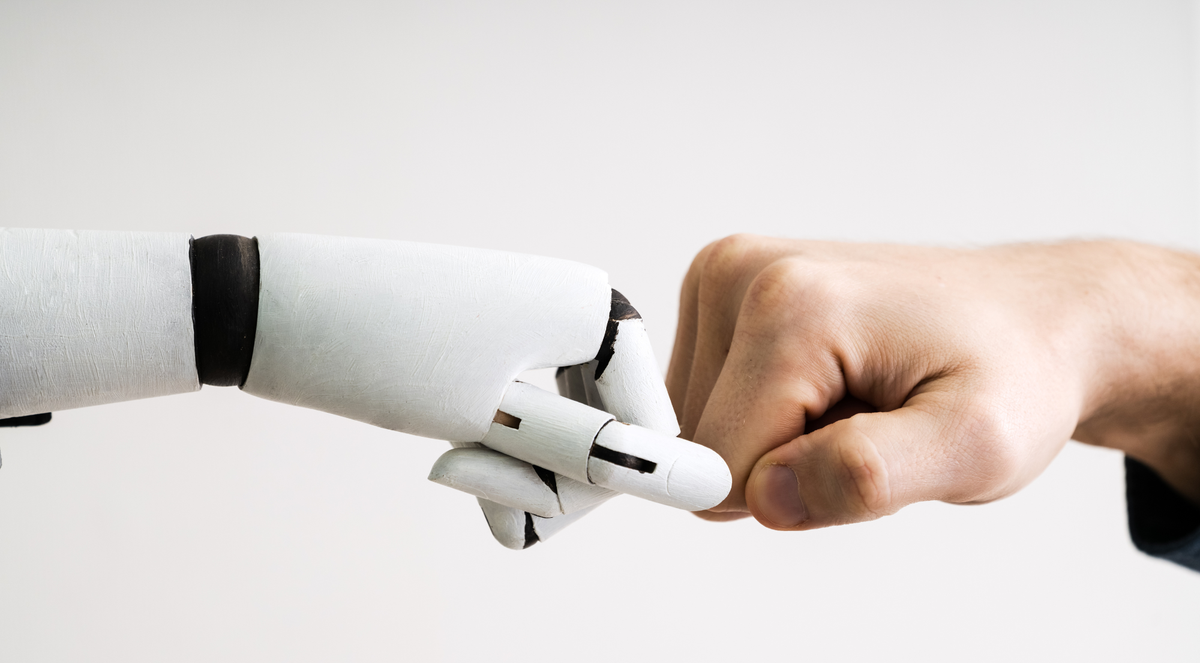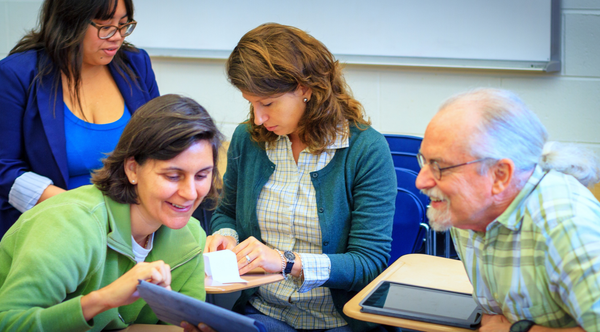From Hype to Impact: AI’s Role in Learning

#ICYMI – Highlights from InstructureCon 2025
AI isn’t coming—it’s here. It’s reshaping classrooms, transforming the workplace, and fundamentally changing how we think about learning. At InstructureCon 2025, I had the opportunity to sit down with my colleague, Christopher Johnson, for a live fireside chat about the impact of generative AI on education and the workforce, and why the future depends on what we choose to do next.
AI: Fear It or Befriend It?
Like any transformative technology, AI brings both opportunity and disruption. I’ve lived through many technology changes, but this moment feels different. Are we living through an evolution—or a revolution?
Some signals are impossible to ignore:
- Rising unemployment among new tech grads—6.1% for computer science majors, 7.5% for computer engineers (NY Federal Reserve).
- Anthropic’s CEO predicts AI will automate half of all knowledge worker jobs.
- Shopify now requires managers to prove a job can’t be done by AI before posting it and has adopted AI company-wide using MCPs to bring their data and systems to the LLMs.
- Microsoft processed over 100 trillion tokens in Q1 2025—five times more than last year.
- 72,000 GPUs are deployed every week just to meet AI’s infrastructure demands.
This isn’t just about using AI—it’s about preparing for a world where AI is the default. We’re seeing the rise of the AI-native employee—someone who instinctively reaches for generative tools before they open a textbook or spreadsheet. Employers now expect AI proficiency that extends beyond basic AI usage. That changes everything.
Preparing Students to Collaborate with AI
The lesson for educators? Don’t teach students to compete with AI. Teach them to collaborate with it.
AI can already outperform humans on repetitive tasks, and has shown increasing abilities to complete complex tasks that were once the domain of highly skilled knowledge workers. That doesn’t mean the human is out of the loop—it means the human has a new role. We should be preparing students to:
- Use large language models (LLMs) as thought partners.
- Analyze and refine AI output.
- Make informed decisions with AI-generated data.
- Communicate clearly with both humans and machines.
- Understand how to provide context to the LLMs to successfully complete complex tasks.
- Understand how to integrate data and functionality with LLMs using MCPs.
In short, we need to rethink what “learning” looks like when the student has a tutor, writing assistant, researcher, and coach in their pocket.
Context Engineering, Not Just Prompt Engineering
When we talk about teaching students to use AI, it’s not enough to show them how to write clever prompts. We need to teach them context engineering—how to provide meaningful background, data, and objectives so AI can produce high-quality, relevant responses.
That means embedding AI into the curriculum itself. Imagine:
- First-year writing courses where students compare their essays with LLM drafts.
- Math and physics classes using AI simulations to visualize complex concepts.
- Group projects where AI tools help scaffold tasks and spark collaboration.
It’s not science fiction. These pilots are already underway—and they’re opening new pathways for engagement, personalization, and creativity.
Creativity Still Matters—Even in an AI World
Yes, AI can produce art, music, code, and design. However, it doesn’t create in the same way people do. It lacks a personal experience to draw from, and it doesn't possess the nuanced imperfections and adaptations that constitute the signature of a favorite musician, nor has it undergone the sacrifices required to master a brush stroke. AI excels at next-token prediction, and it is possible to introduce randomness into the equation to coax it into producing unique results. AI produced comfortable, efficient results. However, as humans, I believe we still enjoy the unexpected, the shocking. The moments that we remember are the “I didn’t see that coming” moments. Those don’t come from predicting the next token. These emerge as a result of a human mind trained on a lifetime of mental and physical inputs, resulting in “aha” moments of inspiration.
We still need students to learn how to think, create, and express themselves—especially in a world where AI is part of the process. The goal isn’t to return to pre-AI education. It’s to make sure human creativity stays at the center of the experience.
Give Students—and Educators—the Right Tools
This future requires a new toolkit. That includes:
- Faculty training and development to help instructors use AI effectively
- Equitable access to AI tools for all students, not just those who can afford them
- Privacy-aware tutoring AI systems that adapt to learners while protecting their data
Assistive AI that automates labor-intensive tasks—from writing feedback to curriculum mapping
Don’t Abandon Assessment—Redesign It
ChatGPT can write an essay, summarize a reading, and ace a multiple-choice quiz. But that doesn’t mean we give up on assessment. It means we design smarter assessments that capture what students really know and can do.
At Atomic Jolt, we’re focused on building tools that support authentic assessments and active learning:
- Multi-part items that scaffold higher-order thinking
- Constructed responses and categorization tasks that require synthesis
- Student-submitted media—images, video, audio—that showcase real work
- Reflection prompts and justifications for deeper metacognition
- Adaptive pathways, accommodations, and partial credit for equity
Even multiple-choice can be meaningful if you ask students to explain why they chose an answer, or what they’d do differently.
Want to go deeper? Join us for our next session, Lunch & Learn: Making Assessments More Authentic in the Age of AI, on August 21 at 1 PM ET.

Meet Atomic CAT
To help institutions navigate this shift, we created the Atomic Curriculum Analysis Tool (Atomic CAT). It provides faculty and administrators with a bird’s-eye view of their course structure, content alignment, and assessment quality.
It’s especially helpful when AI is used to generate learning materials. With Atomic Cat, you can ensure that content is aligned to outcomes, identify gaps or redundancies, and improve how you measure learning across programs.
Think of it as X-ray vision for your curriculum.
Where Do We Go from Here?
Whether AI represents an evolution or a revolution, we’re standing at a threshold. Educators have a choice: resist the change, or redesign learning to meet the moment.
This post is adapted from my live fireside chat with Christopher Johnson, “From Hype to Impact: AI’s Role in Learning,” delivered at the 2025 InstructureCon conference in Spokane, Washington.
You can view the session listing on the InstructureCon agenda.



